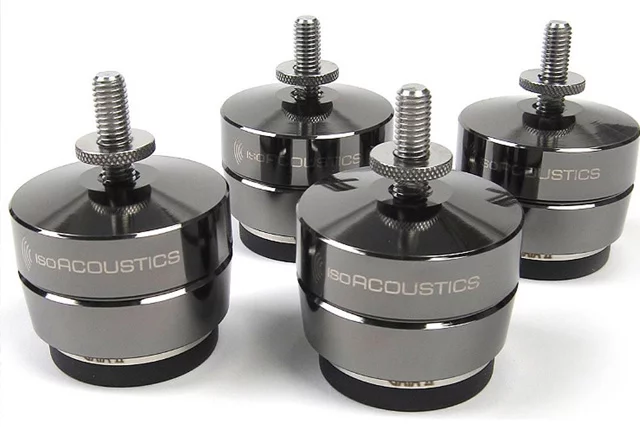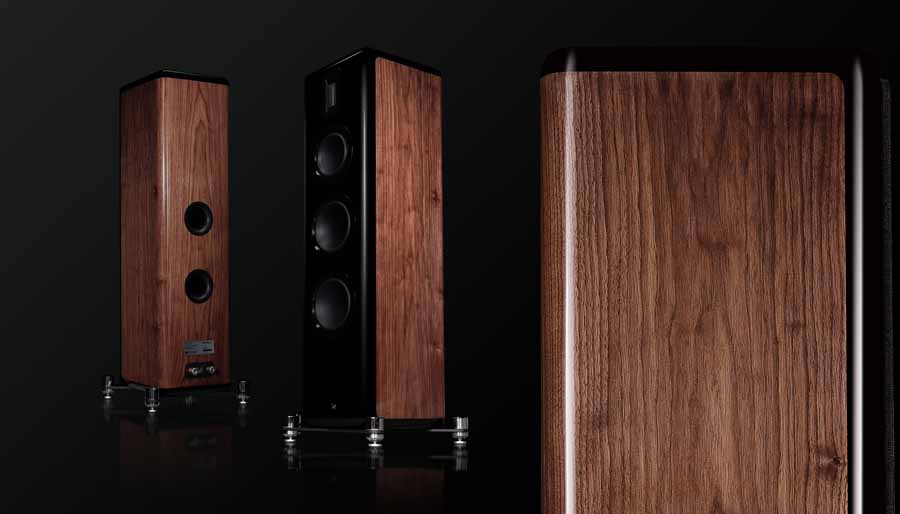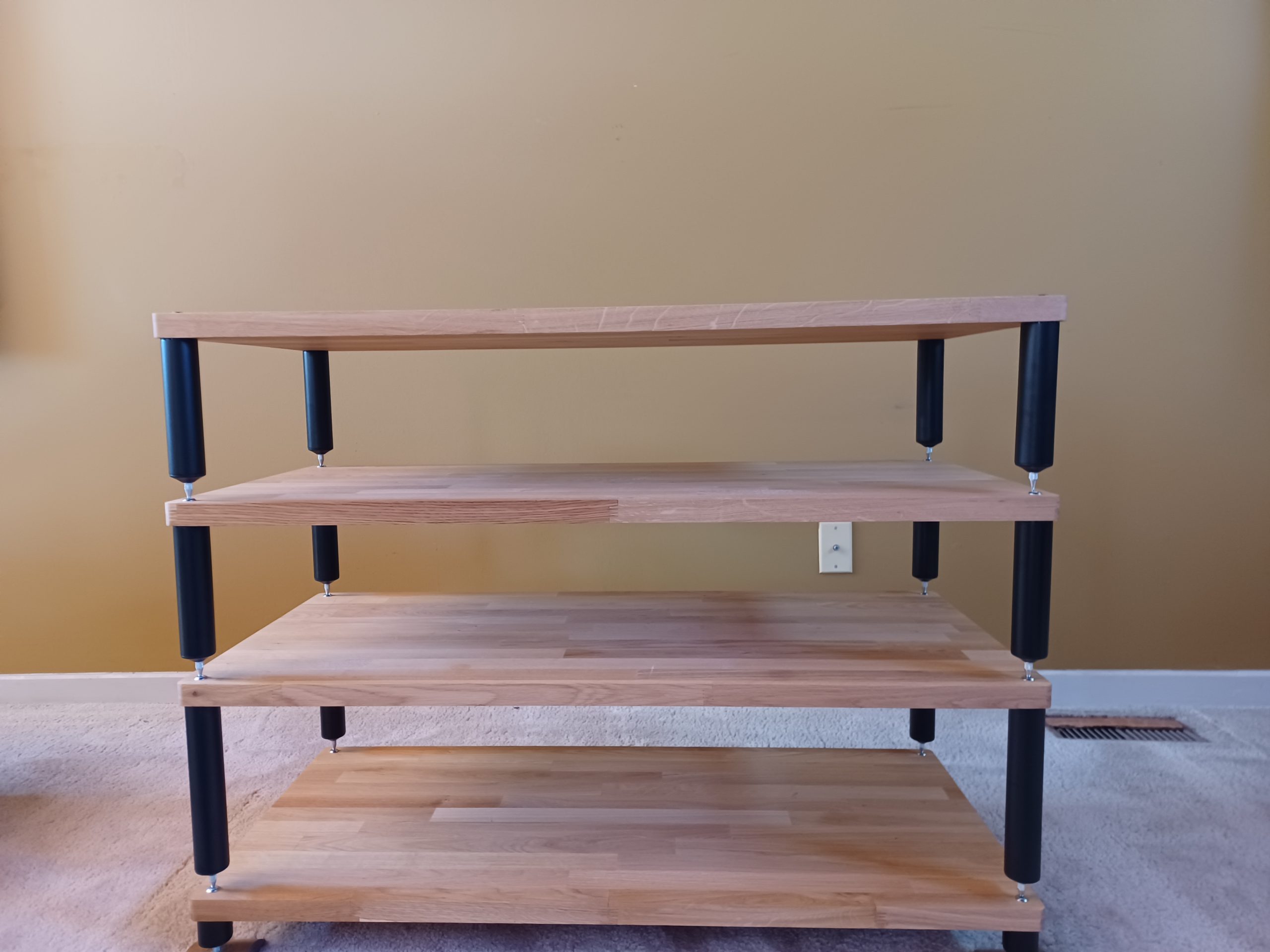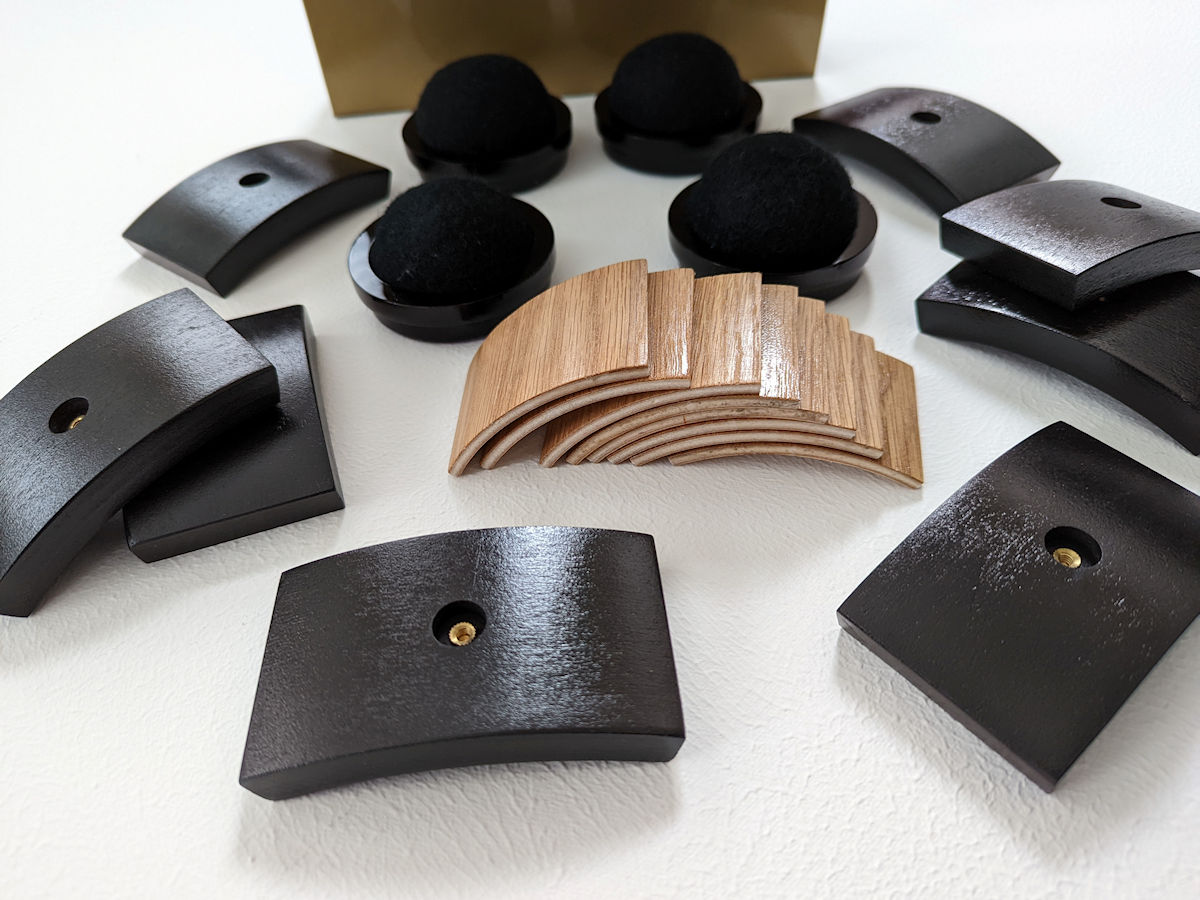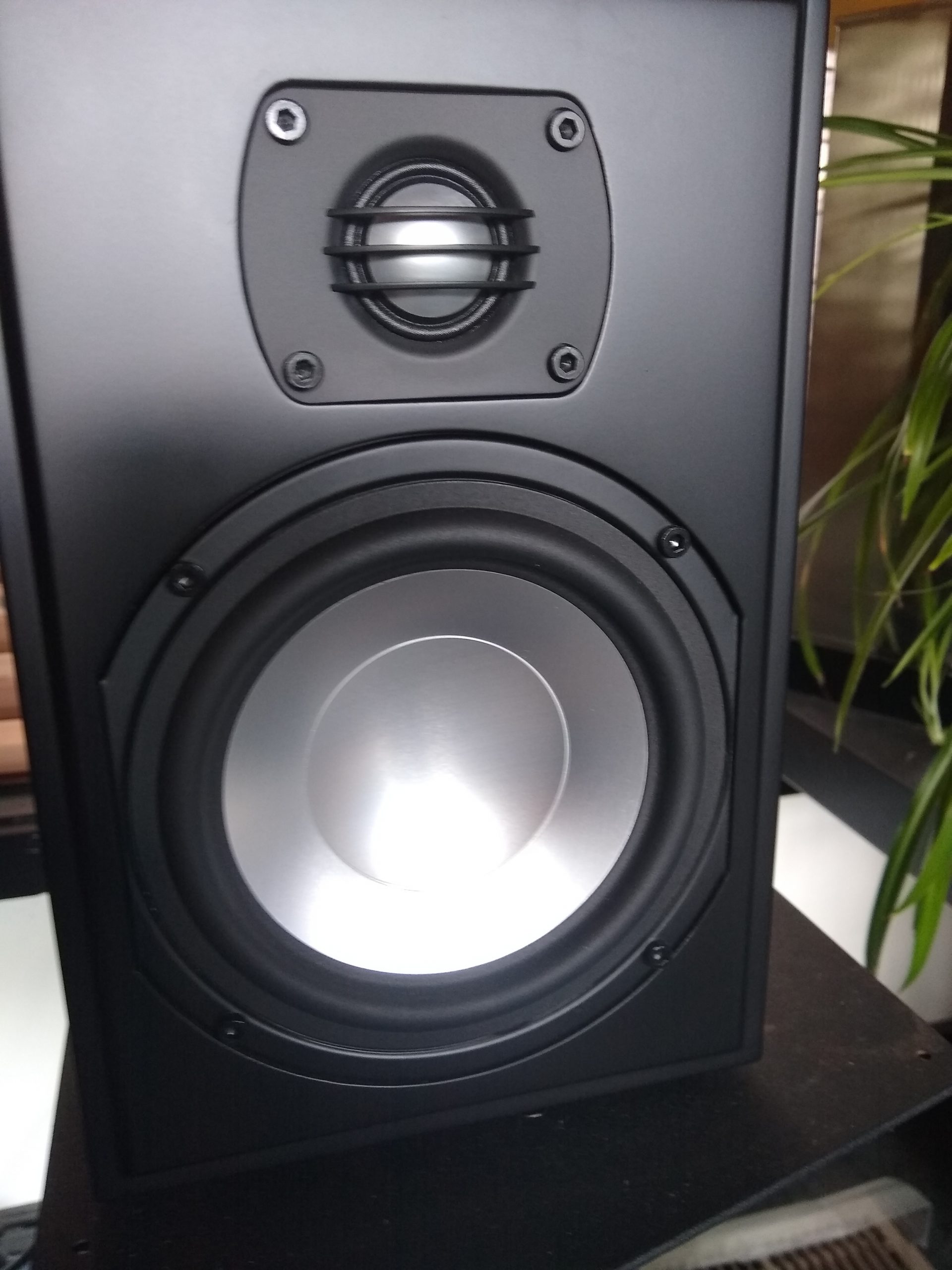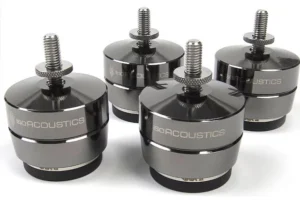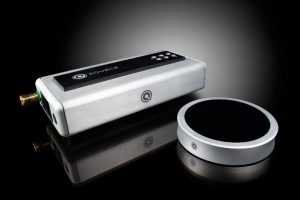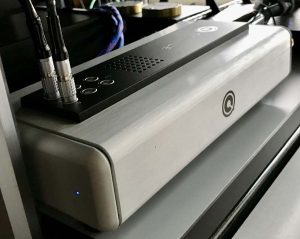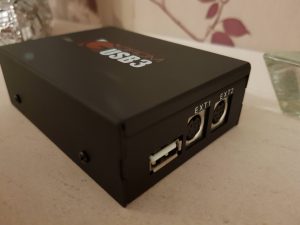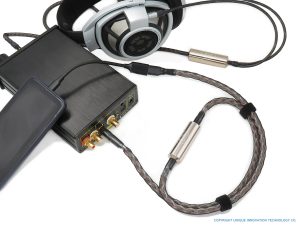I've been a fan of Gingko Audio's vibration control products for a long time. Way back in '08 (remember the sub-prime mortgage crisis?), I reviewed the Cloud 9 vibration control platform for my VPI turntable (HERE). Fast forward 14 years, and I'm still using it. Although I've replaced the rubber isolation balls, it still works just as advertised. I've also been using the Gingko Acoustic Resonance Clarifiers™ (ARCH) since I first tried them back in the pre-Covid days of May '18. I was skeptical at first—just because the shape was unusual—but after listening it didn't take long to hear the sonic benefits the ARCHs provided. I tried them with just about every component in my system, and you can read the results of the original review (HERE). As a result of my experiences, I gave the ARCHs a PF Writers award (HERE).
Four years later, and I'm still using the ARCHs. I'd miss them if they were gone. These days, more than ever, I look for a price-to-performance ratio that makes sense for this economically challenging time, and the ARCHs fit right in with my philosophy, especially after seeing the inflated prices of so many audio products in 2022. When Vinh Vu, the man behind Gingko, let me know he was offering a toolkit aimed at controlling vibration for the entire system I was delighted to see what they had to offer. Vinh sent me the new Speaker ARCHs, Equipment ARCHs, and Cable ARCHs (although the Cable ARCHs are not technically part of the VCS toolkit). I will have to wait a bit for the newest Gingko device, the Cloud22, (supply chain issue) which uses lamb's wool as a vibration control material. Lamb's wool? I've been skeptical before—and wrong. I'll cover the Cloud22 and impressions of the complete VCS toolkit in Part Two of this review.
This part of the review focuses on three products all based on ARCH technology. According to the Gingko website, "The ARCH is constructed from a lossy material that dissipates vibration across the audio frequency spectrum. The material is seal-coated with polyurethane to make it resistant to moisture and strengthen its rigidity under heavy speakers and audio components. The ARCH design is a curved shape with two ends that rest on the floor at an angle, thus minimizing transferred energy from the cabinet to the ground. In addition, the ARCH flexes under the weight of the speaker as the latter vibrates, further reducing the transferred energy." Gingko has an excellent white paper that not only explains how the ARCHs work, but has some great graphics and includes measurements to help understand the ARCH concept. If you're interested, read the entire paper (HERE).
Following are some text and graphics that summarize the main points of the paper (This mainly refers to the new speaker ARCHs) from the Gingko website:
First, Gingko found that the speaker ARCH works well under spikes but works even better in place of the spikes. This led to the development of the 2nd gen speaker ARCH, which includes the hardware to attach the ARCH to your speakers. Essentially the spikes that came with your speakers are great at channeling vibration to the floor. But, the same spikes can also reflect the out-of-phase vibrational energy back up through the cabinet and down to the floor again. Using the ARCHs facilitated multi-axis vibrational dispersion that resulted in increased clarity, transient attacks, and expansion of the soundstage width and depth.
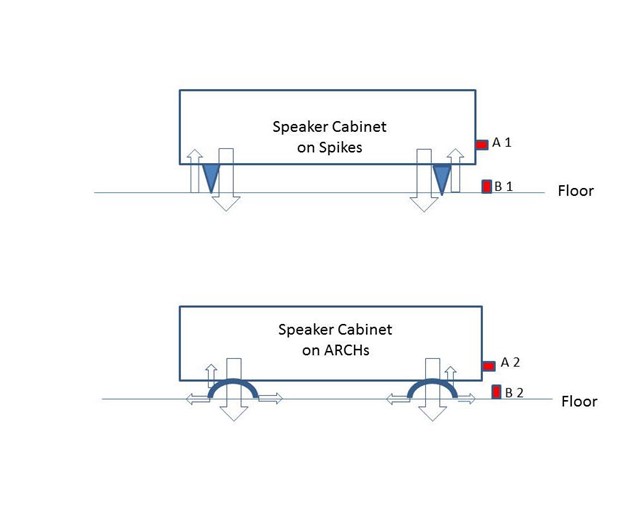
The ARCH is made of wood-based materials with excellent absorbing quality—vibration is dissipated and very little is reflected back to the speaker. Its constrained-layer design filters vibration at different frequencies thus minimizing what is transmitted. Its curved shape acts as a leaf spring to turn vertical vibration into smaller sub-components in the vertical and horizontal dimensions. The horizontal sub-components are not reflected vertically back to the speaker. It rests on the floor on an edge thus minimizing transmission both ways—downwards and upwards.
The first gen ARCHs reminded me of a treated paper product like a concrete form tube, although I'm not positive what they really are. And, I don't really care what they're made from as long as they work. And, I can confirm they work, well. But, good designers rarely rest on their laurels and Vinh hasn't been idle. "The latest ARCHS are made of high-quality layered maple material that offers superior vibration control performance." This new maple material and the addition of hardware to attach to your speakers in place of its stock spikes build on the basic ARCH technology, and Gingko believes this is a significant improvement.
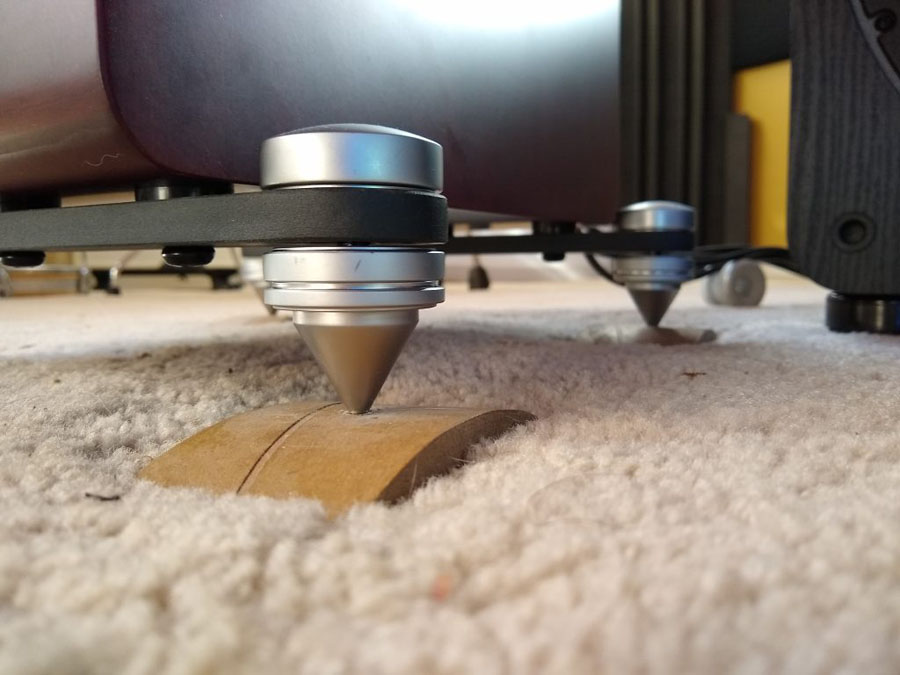
Original Arch
Be aware of the weight of the component you'll be using the ARCHs with, whether speakers, amps, preamps, DACs, etc. "The 1/2" thick model can support loads of up to 25 lbs. per ARCH; the 5/8" thick model can support loads of up to 50 lbs. per ARCH. Lighter equipment and speakers (under 15 lbs.) can continue to use the Mini-ARCH. Each Mini-ARCH piece can support a maximum load of 5 lbs."
Speaker ARCHs
The VCS Speaker ARCHs are basically an equipment arch with bolts, washers, and nuts that enable you to attach them directly to your speaker, in place of its spikes or feet. If you have stand-mounted monitors you'll want to attach the ARCHs to the stands in place of their spikes or feet. I removed the original ARCHs from beneath my speaker spikes, removed the spikes, and screwed the new ARCHs directly into the outriggers of my Quad S-5 floorstanders. It was easy to position them precisely where they had been, just place the new ARCHs (they are the same size) in the indent the original ARCHs made from sitting on the rug. If your speakers are not sitting on a rug mark the position with tape. Tighten down the assembly (not too hard) and you're ready to go. Before you order from Gingko, make sure you check for the correct thread size for the speaker ARCHs. I went to the local Ace Hardware and used their handy thread size chart to confirm my speaker's thread size. Mine were not the standard M6 Gingko has listed, so please measure and confirm. With the original ARCHs I tilted the speakers slightly down on the front, because of the height the ARCHs added to the speaker under the spikes. With the spikes now out of the picture I used a little bubble level and tilted the speakers slightly up at the front to compensate for the lover overall height of the cabinets. No problem, got it right the first time.
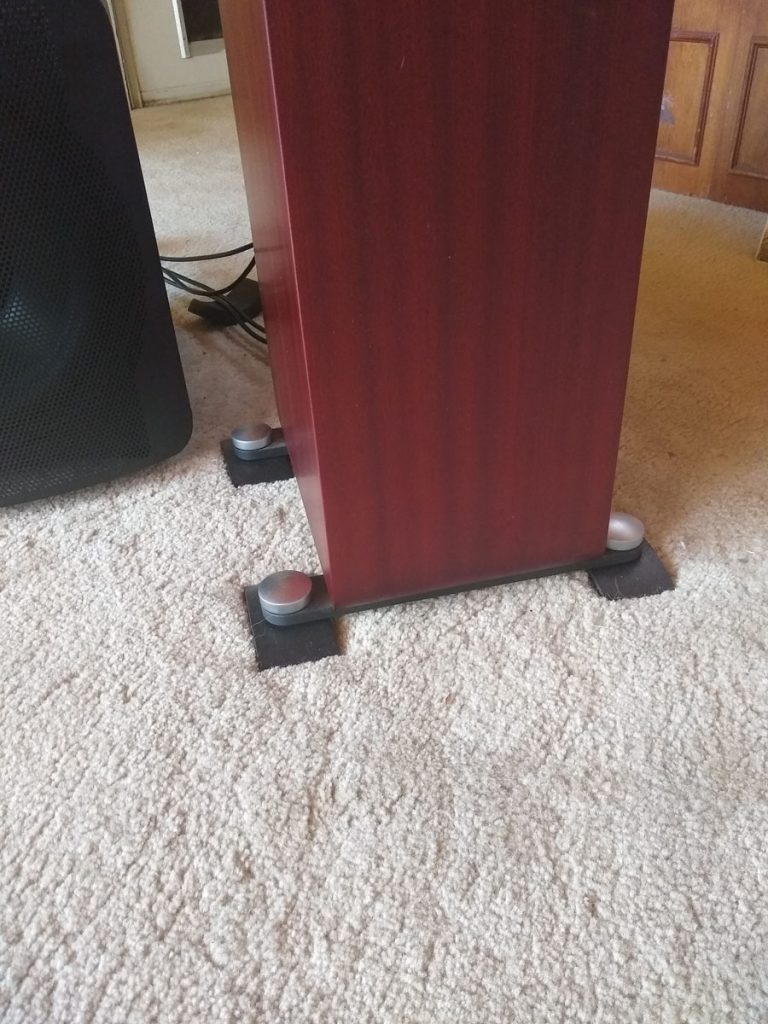
Putting on some music reminded me of when I heard the first ARCH prototypes. An organic smoothness enveloped the soundstage, but was now more concentrated and pronounced with the new ARCHs. My first thought was the maple construction (at least partially) helped, but recalling the graphic and measurements from the white paper, I could really appreciate how the new model screwed directly into the speaker hardware, more efficiently coupling the cabinet to the ARCHs and the floor. There was a lovely hint of bloom (not too much) and clarity in the mids, and interestingly I noticed improved detail further out from the center of the soundstage. Not more detail mind you, but it was easier to perceive, which in turn enhanced the microdynamics. The entire soundstage seemed to come alive with nuances, especially in the periphery, and it made listening not only more pleasurable, but somehow easier. Sustain, whether a reverb, digital delay, or room effect, lasted a teensy bit longer. The transients of both string and electric bass felt a little more pronounced, well-recorded bass drums and tom-toms really came alive with more impact and depth. Hmm, most high-end drums are made from plies of maple. Maybe top-shelf drums and the new ARCHs have something in common? Overall, I was not expecting much of an improvement from the original speaker ARCHs, but now I don't want to go back to my speakers with their spikes and the original ARCHs.
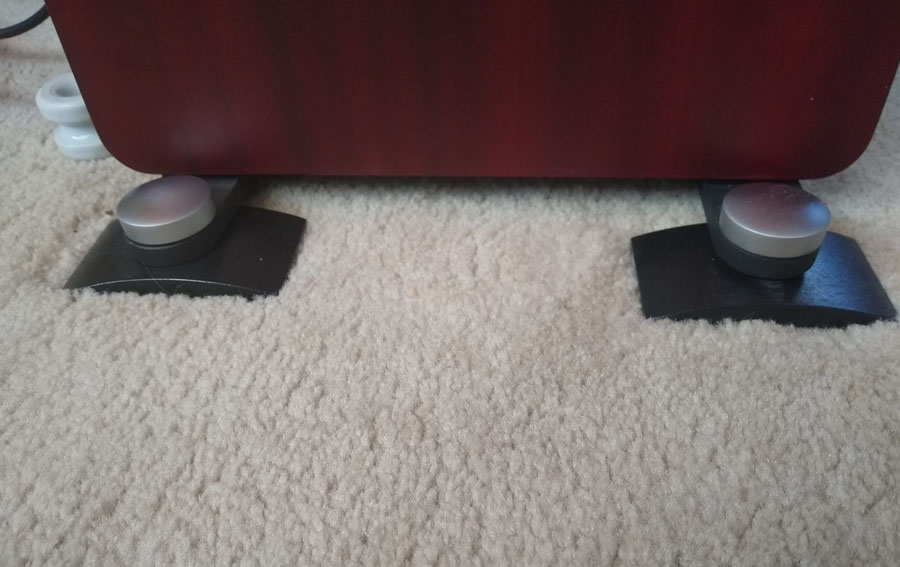
VCS Speaker ARCH
Mini-ARCHs
The Mini-ARCHs are the lighter version of the Equipment ARCH that is the basis of the Speaker ARCH. Each Mini-ARCH supports up to 5 lbs. My DENAFRIPS Pontus DAC weighs 25 lbs., and I decided to try both the Equipment and Mini. Although the Minis total support weight was slightly under the total, I heard more goodness with the smaller, lighter ARCH. With the Minis installed I noticed the music flowed with more of a liquid feeling. It felt like a bit of resistance (not electrical) had been lifted, allowing the system to perform easier. I also noticed a bit of improvement in focus, and a more solid image. The DAC seemed to have to work less, projecting itself more gracefully.
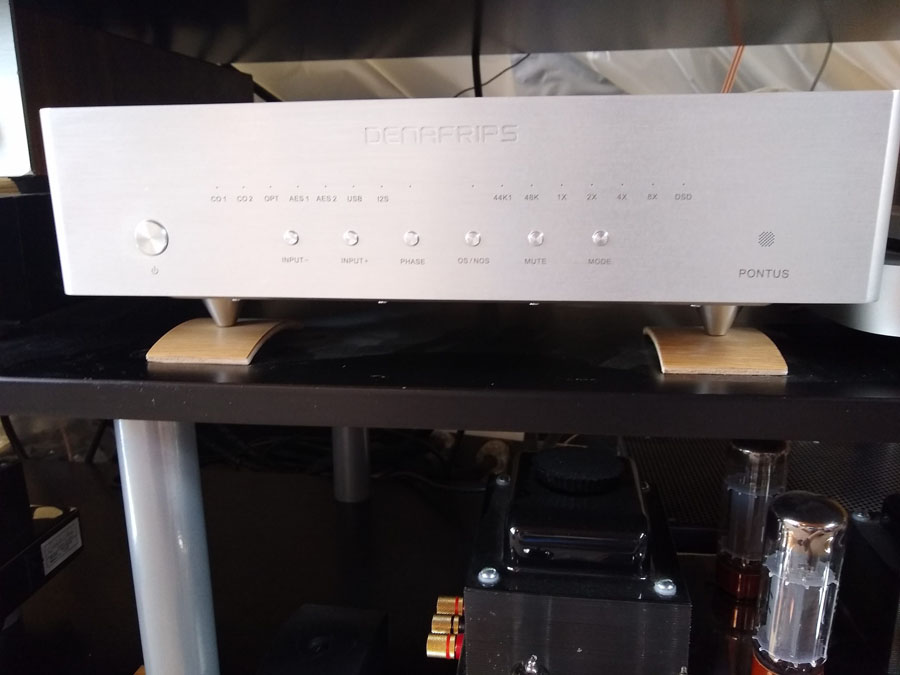
Mini ARCH
Equipment ARCHs
My Doge Clarity 8 preamp weighs 30.8 lbs, so I hauled out the bigger, heavier equipment ARCHs and put one under each footer. Visually they matched the satin black of the Doge's case finish nicely, almost like they were part of the assembly. I think the small signal preamp tube vibrations caused by mechanical impulses can certainly be amplified, affecting the rest of the system, so why not practice some vibration mitigation on tube preamps and nip that noise in the bud? The Clarity 8, with Psvane tubes, was simpatico with ARCHs right away. I heard a cleaner, clearer, more logical presentation. The microphonics from the small 12AX and 12AT tubes in the preamp improved, resulting in less distortion on dynamic edges and gave me more of the inner presence of the music.
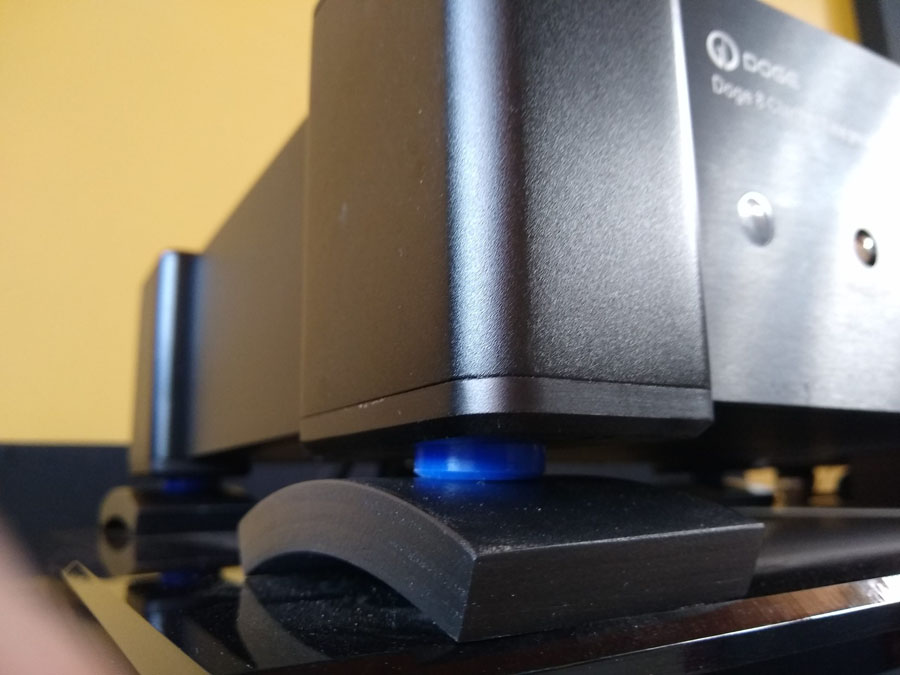
Equipment ARCH
Cable ARCHS
Although the Cable ARCH is not technically part of the VCS Toolkit, Vinh sent me a set with the first batch of VCS Toolkit components. The Cable ARCH further builds on the basic equipment ARCH, and additionally features a slot in the middle that also includes a wood dowel and cushioning tube. You can use them without the dowel and tube, resting the cable directly on the ARCH, or you can also put the tube sans dowel on the ARCH, and place the cable on the tube. The third possibility lets you put the dowel inside the tube, and put both in the slot, them lay the cable across the tube perpendicularly. Lots of options.
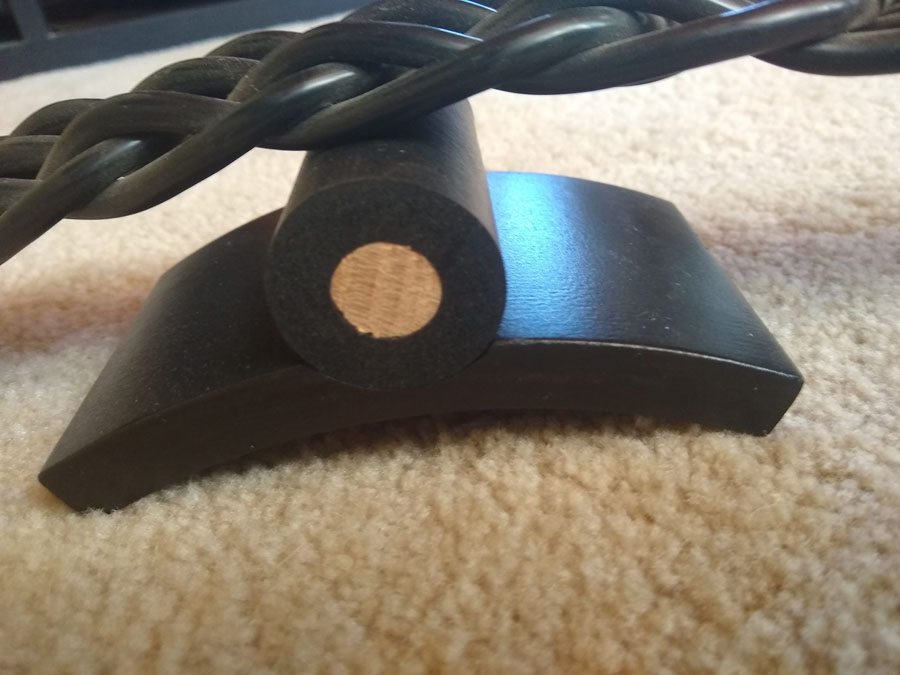
Cable ARCH
Cable lifters can be a controversial subject of discussion amongst audiophiles. I'm not going to wade into those waters here. Instead, I suggest you read an article by Positive Feedback's own Roger Scoff (who has already forgotten more about cables than I'll ever know) HERE. All I can say for sure on this subject is I've been present for several comparisons of cable lifters, different products in different rooms. Sometimes I heard no difference at all. Sometimes I heard a slight change for the better. Sometimes the change was positive and pronounced. Luckily the Gingko risers were in the last category. Although the improvement—as you would expect—was not as noticeable as what I heard from the speaker ARCHs, there was improvement. I heard better clarity. There was also a noticeably improved delicacy, mainly from unprocessed acoustic instruments and vocals. Just as with the speaker ARCHs, a smoothness and sophistication was noticeable, although I felt it (?) more than I heard it. The effect reminded me of when you fix a minor ground loop.
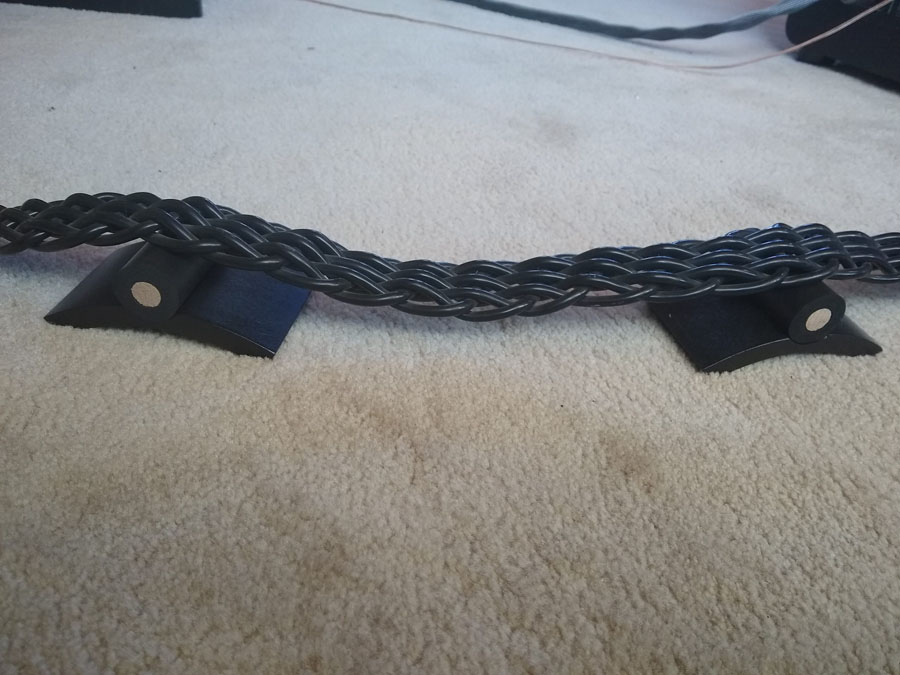
Cable ARCH
Part 1 and Part 2
Gingko's ARCHs are designed to play well together and complement each other. What they bring to the table is palpable, although some ARCHs are more effective than others. Using ARCHs designed for components, speakers, and cables allowed my system to sing at a higher level when they were used collectively vs individually. The Speaker ARCHs provided the most improvement (as you would expect)—the speaker produces the most vibration and thus benefits the most. That said, the Equipment and Cable ARCHs are no slouches. They all provide easily audible positive benefits. The good news is all the ARCHs are affordable, and work together to elevate your system and let more of the meaning of the music reach your head. The more good news is they all come with a 30-day money back guarantee. I can't wait to listen to the entire VCS with its newest component, the Cloud 22. Stay tuned.
Equipment and Speaker ARCH
Retail: $159 – $199
Cable ARCH
Retail: $249 – $299
Gingko




